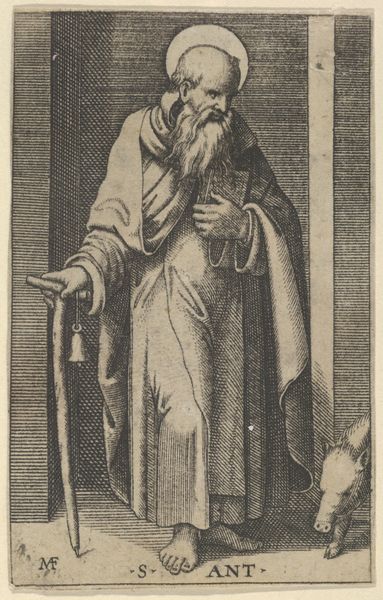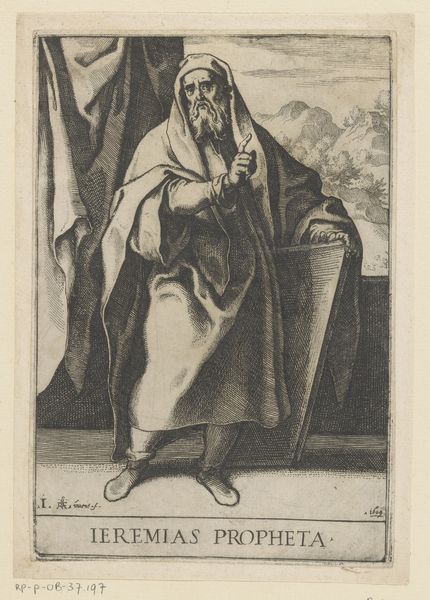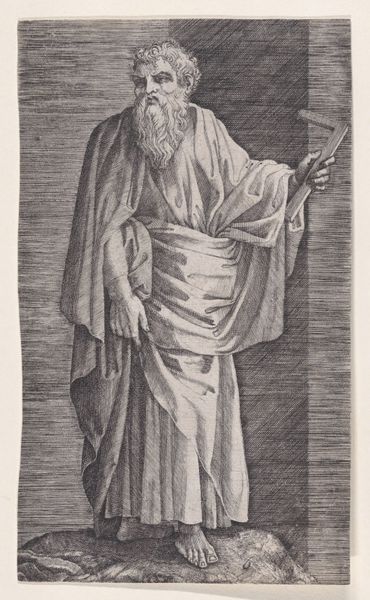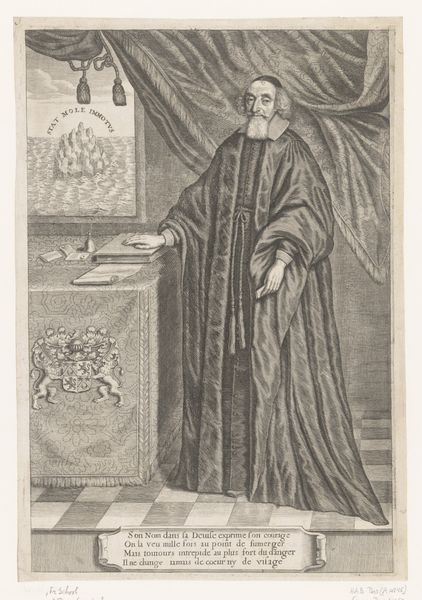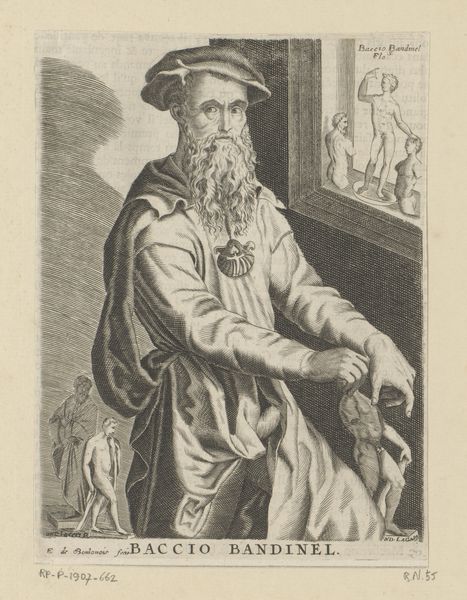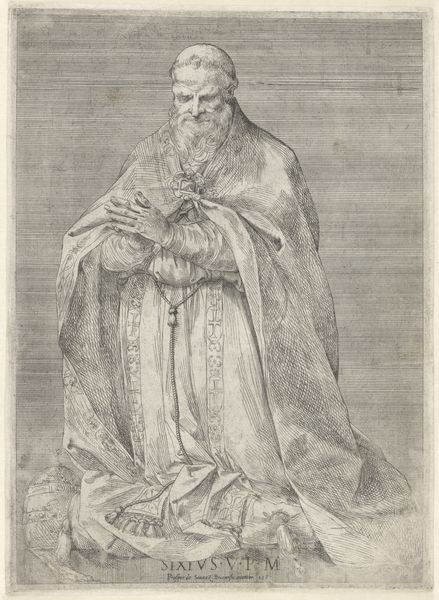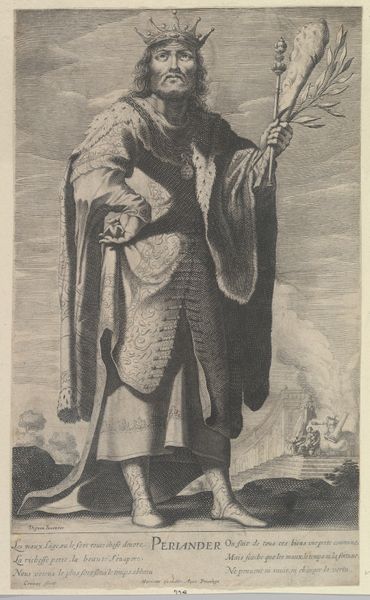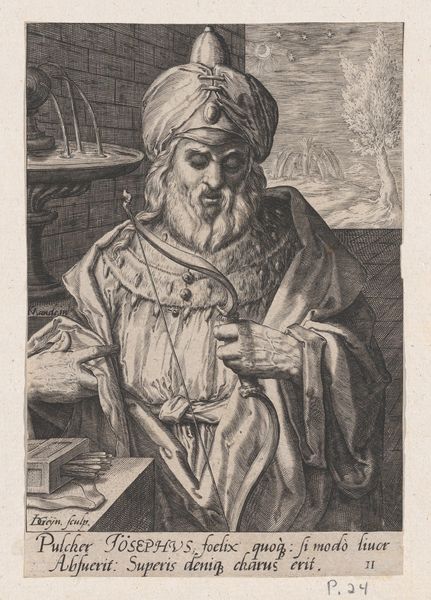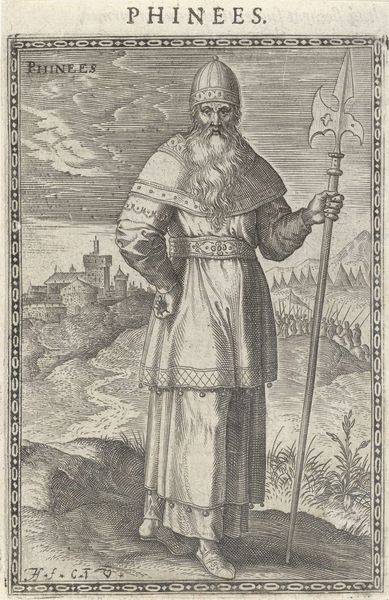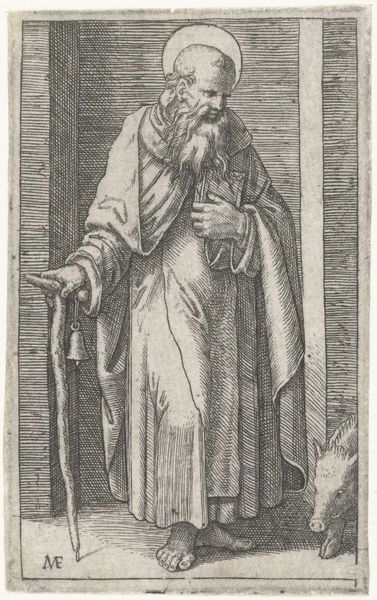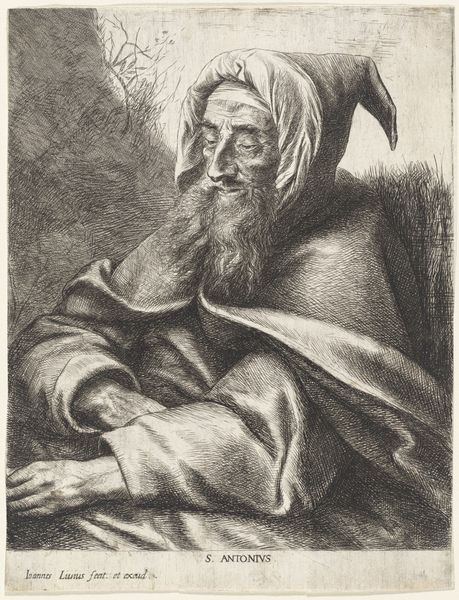
King (Saladin from Egypt), from "Court Game of Geography" 1838 - 1855
0:00
0:00
drawing, print, engraving
#
portrait
#
drawing
# print
#
pencil sketch
#
old engraving style
#
ancient-egyptian-art
#
figuration
#
history-painting
#
engraving
Dimensions: 3 3/4 × 2 1/2 in. (9.5 × 6.4 cm)
Copyright: Public Domain
Curator: This is “King (Saladin from Egypt), from “Court Game of Geography”," a print, drawing, and engraving by William and Henry Rock dating between 1838 and 1855, currently held at the Metropolitan Museum of Art. Editor: It possesses a striking graphic quality. The meticulous lines create a detailed image. Curator: Indeed, observe how the controlled, precise engraving captures Saladin's regal attire. The artist gives attention to the patterns of the fabric and the distinct architectural details like the pyramids. This gives a very ordered structure to the portrait, doesn't it? Editor: Certainly, and the subject demands contextualization. Here we have an Egyptian leader rendered at a very specific moment when colonial interpretations of the Middle East shaped global perspectives. Saladin is intentionally depicted, referencing how Western ideologies and historical narratives played a crucial role in shaping how individuals from different cultural backgrounds were and are still portrayed. Curator: Yet it’s more complex than simple Orientalism, perhaps. Notice how the pyramid functions not merely as an exotic symbol, but as a carefully rendered geometrical shape. The print is less concerned with actual Egypt, I'd argue, than with formal organization. Editor: I think that denying its engagement with history misses an opportunity to discuss the impact that visuals such as this have. Even the composition places Saladin in proximity to these symbols. Curator: Agreed, the image and elements coexist dynamically. These graphic elements point to form itself as the subject. It presents a chance to decode artistic elements rather than getting lost in assumptions. Editor: To me, it is hard to extract the aesthetic decisions from their role in influencing broader discussions around power and identity. Curator: It's a balance, isn't it? Perhaps appreciating it's form does not require denying all context. Editor: Ultimately, analyzing its structure can uncover deeper questions of social dynamics and cultural dialogue embedded within art itself. Thank you for allowing a different perspective.
Comments
No comments
Be the first to comment and join the conversation on the ultimate creative platform.
